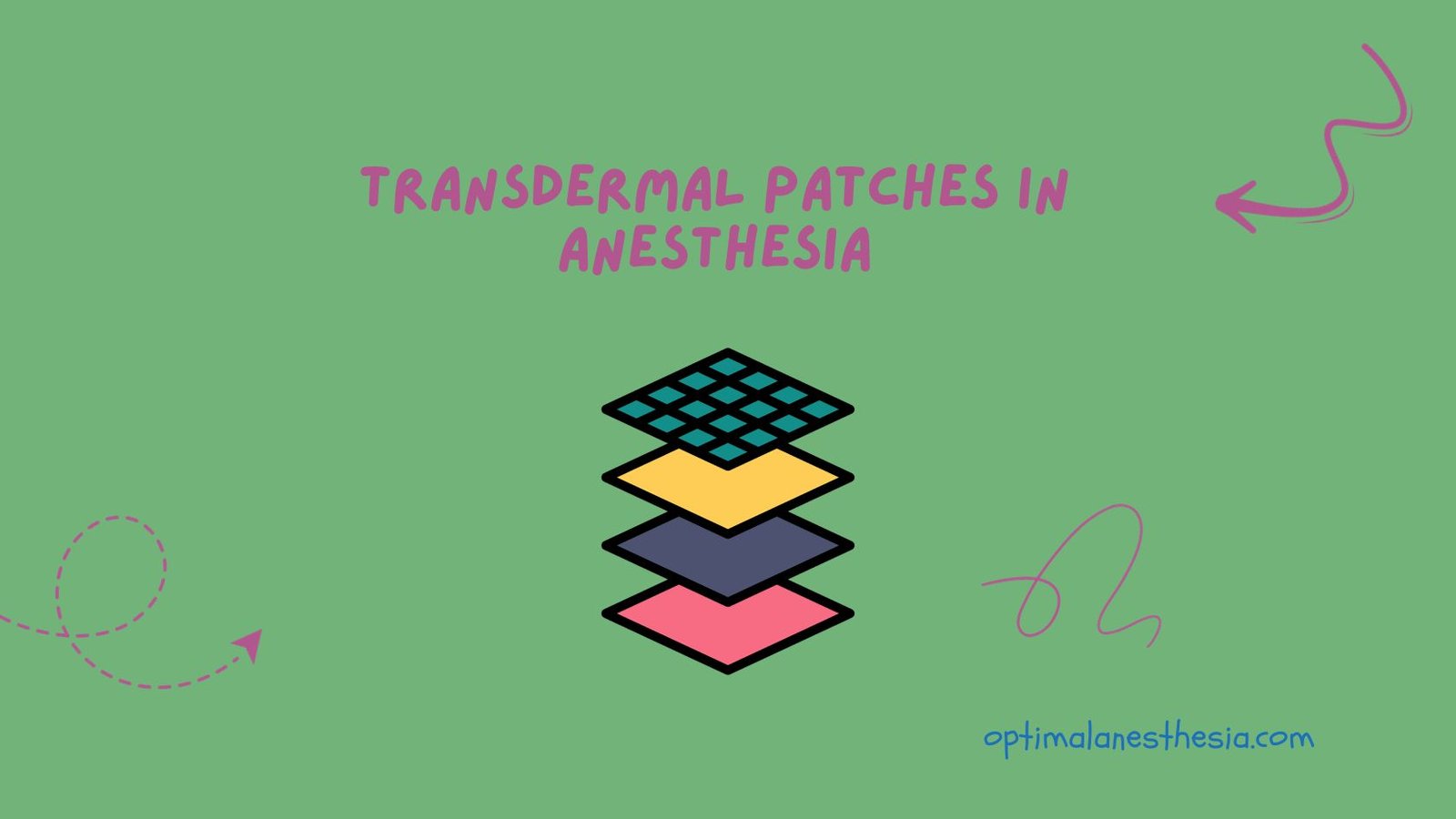Transdermal patches are innovative delivery systems used in various medical applications, including anesthesia. However, it’s important to note that transdermal patches are not commonly used for anesthesia induction or maintenance, as intravenous or inhalation methods are more prevalent. Instead, they find their primary utility in post-operative pain management and the controlled release of medications over an extended duration. Let’s explore the history, layers, and specific drugs used in transdermal patches for anesthesia.
History of Transdermal Patches
The concept of transdermal drug delivery traces its roots back to the early 20th century. However, it wasn’t until the 1970s that transdermal patches, as we know them today, gained widespread use. The first transdermal patch introduced to the market was the scopolamine patch, designed to combat motion sickness, and it was launched in 1979. Since then, pharmaceutical advancements have led to the development of transdermal patches for a wide range of medical conditions.
Layers of a Transdermal Patch Used in Anesthesia
Transdermal patches used for anesthesia typically consist of several layers, each serving a specific purpose in controlled drug delivery:
| Layer | Function |
|---|---|
| 1. Backing Layer | – Outermost layer, impermeable to external factors |
| – Protects the patch from moisture and physical damage | |
| 2. Drug Reservoir or Matrix | – Contains the anesthetic agent |
| – Formulated for controlled, extended release | |
| 3. Controlled Release Membrane | – Controls the rate of drug release |
| – May be semipermeable to permit controlled passage | |
| 4. Adhesive Layer | – Adheres the patch to the skin |
| – Ensures secure attachment during movement | |
| – Designed for easy removal when necessary | |
| 5. Liner or Release Liner | – Covers the adhesive side before application |
| – Removed before patch placement |
Drugs Used in Transdermal Patches for Anesthesia
Transdermal patches in anesthesia contain specific drugs, each with its available strengths, duration, onset of action, and year of launch. Here are the key drugs used:
| Drug Name | Year of Launch | Dose | Duration | Onset of Action |
|---|---|---|---|---|
| Lidocaine | 1948 | Various strengths, e.g., 1%, 3%, 5% | Typically 12 hours | Within 1 hour |
| Diclofenac | 1984 | Various strengths, e.g., 1.3%, 1.4% | Typically 12 hours | Within hours |
| Clonidine | 1982 | Various strengths, e.g., 0.1 mg/day, 0.2 mg/day, 0.3 mg/day | Typically 7 days | Several hours |
| Buprenorphine | 1978 | Various strengths, e.g., 5 mcg/hour, 10 mcg/hour, 20 mcg/hour | Typically 7 days | Gradual (24-72 hours) |
| Fentanyl | 1960s | Various strengths, e.g., 12 mcg/hour, 25 mcg/hour, 50 mcg/hour, 75 mcg/hour, 100 mcg/hour | Typically 72 hours | Slow onset (12-24 hours) |
Please note that the availability of these strengths may vary depending on the manufacturer and the country in which the medications are prescribed. The choice of patch and dosage should be determined by healthcare providers based on the specific patient’s needs, the type of surgery or procedure, and the duration of pain relief required.
The development and utilization of transdermal patches in anesthesia continue to evolve with advancements in pharmaceutical and medical technology. Healthcare providers carefully select and administer these patches to ensure effective pain management while minimizing potential side effects or complications for patients.


